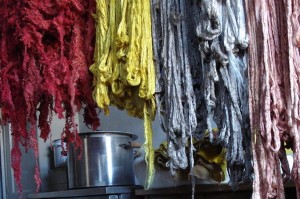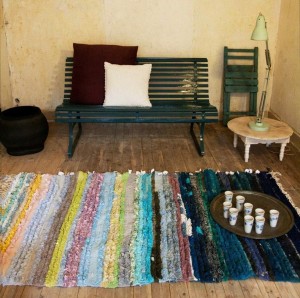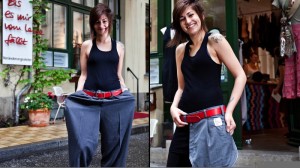25
2013Slow fashion
I do not claim to give a full definition of slow fashion here. These are only a few personal reflections on the subject. The term ‘slow fashion’ is not easy to define and can be widely interpreted. A lot of initiatives are being taken under this flag, including mine. However, a few of the following aspects should be taken into account:
- ecologically justified techniques and materials
- social entrepreneurship
- animal welfare
- waste reduction
- recycling of raw materials
- reuse of products
To me slow fashion also means a different approach towards capitalism where everything seems to be regulated by perverse incentives and where everything is being expressed in money. Since I cannot ask a time-wage for the hours I spend working on one article (it would simply be too expensive), I have chosen to partly reverse the pricing principle. I use three pricing categories per article (low, average, high), depending on your income.
It is for you to consider in which category you would classify yourself. Moreover, to make sure I’m not ending up reproducing the same article over and over again I want to reproduce a model up to six times and only twice per pricing category. This way I hope to be able to reach a wide range of people who are interested in slow fashion (and like my products). For instance if you are a student and haven’t got much to spend I still find it satisfying to make something beautiful for you because you represent my sense of quality and beauty by wearing a genuine Lena Milagros! I love to feel the fine yarns and the pieces of jersey in my hands. These things are a kind of reward as well. [Changed at September 15, 2013]*
I am not an advocate of natural fibres just because it has a supposed air of everything being fine and free from problems. Every material has its advantages and disadvantages. It is the way people handle them that counts.
Awareness and sustainability are the buzz words these days. On the one hand it is important to know that many synthetic fibres are made of raw oil and at a certain point in future all oil will be used (or too deep to be drilled at). On the other hand be aware that a sheep must eat and thus is a rival to man. The world population is still growing. How much surface do we need to feed the world? Maybe the pasture where a flock of sheep used to graze must turn into a wheat field one day. You’ll have to consider all these aspects before you can make a sensible decision which material to choose.
Anyway, trendy stuff that is made to be worn off in one season is not my idea of durability. Not to mention how people get rich at the expense of others (yes, I mean Bangladesh). We could solve a lot of problems if we all made the shift from quantity to quality. We don’t need more clothes, we need more beautiful and durable clothes!
The clothing industry leaves a big fat footprint on mother earth. For example, to grow cotton far too much (drinking) water is needed and a lot of pesticides are used. Buying a simple t-shirt is not as innocent as you might want it to be. So buy one made of organic cotton if you can, or at least buy one of good quality so you can wear it for years. By the time it is totally worn out it can still be used as a cleaning rag. Or send your old rags to Carpet of Life where they weave a unique carpet for your home.
Another sympathetic initiative of slow fashion is the Wiener/Berliner label Bis es mir vom Leibe fällt from Lisa d. The customer can bring her old but dear garments to the shop and discuss the possibilities to give them a new life. It is also possible to buy a completely refashioned jacket in which you recognize details from a man’s suit. Or a sexy dress made out of a big gentleman’s pants. Everything gets a surprising twist.
The Dutch felt artist Claudy Jongstra keeps her own flock of sheep and grows species of plants that contain pigments to dye her wool with.
I even heard of a woman who regularly shaved her dog and spun its hair to yarn and eventually knitted her self a pullover from it. Now that’s what I call slow fashion! (She shouldn’t go out in the rain with that pullover on though, she‘ll probably get that wet doggy smell about her).
*: I received many reactions on the pricing principle of three categories. It turned out to be confusing. That is why I have decided to adjust my way of determining prices. Please, consult prices for more information.


